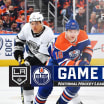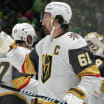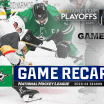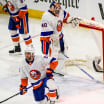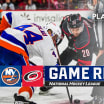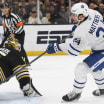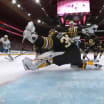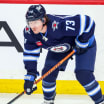The Sharks are still getting 55.50 percent of the shot attempts during their past 22 games, so that hasn't really changed, but they are shooting 11.5 percent at 5-on-5, best in the NHL since Dec. 2. San Jose's 5-on-5 save percentage in that span is .910, 21st in the NHL, but 10 spots higher than its pre-Dec. 1 ranking.
Karlsson's fortunes have mirrored those of his team. Through the first 27 games of the season, Karlsson was on the ice for 59.55 percent of 5-on-5 shot attempts and had 15 points in 27 games, production well below his typical output in Ottawa, where he averaged 71 points per season during the previous five seasons.
Since Dec. 2, the Sharks have been getting 59.42 percent of the 5-on-5 shot attempts with Karlsson on the ice and his point production has taken off. Although Karlsson missed two games in December because of a suspension, he has 28 points (one goal, 27 assists) in his past 20 games. When shots created are getting converted into goals, it becomes a different game.
The Sharks also have the luxury of having two incredibly productive defensemen. As great as Karlsson has been, Brent Burns has put up 25 points (six goals, 19 assists) in his past 22 games and leads all defensemen in scoring with 52 points (nine goals, 43 assists) this season. Naturally, the Sharks had high expectations for their defense duo coming into the season and it has taken some time, but they've lived up to the hype.
Burns and Karlsson have combined for 95 points, far and away the most by any defense teammates, ahead of Mark Giordano and Noah Hanifin (72) of the Calgary Flames, Morgan Rielly and Jake Gardiner (71) of the Toronto Maple Leafs, and Mattias Ekholm and Roman Josi (70) of the Nashville Predators.
Though it's entirely reasonable for the Sharks to expect major production from Burns and Karlsson -- they are, by a wide margin, the two highest-scoring defensemen during the past 4 1/2 seasons -- the real Sharks team probably sits somewhere between the two extremes displayed this season. The Sharks may not be the best shooting team in the NHL, but they're probably not near the worst either.
But these Sharks are precisely why team evaluation shouldn't be based on goals or wins over small sample sizes.
Through the first third of the season, San Jose was stumbling along with a below-average record and negative goal differential, and now the Sharks are Stanley Cup contenders.


